Example 1
You outstretch your hand and ask the dog to “shake.” It licks your outstretched hand and then offers it’s paw. You then mark with a “yes” and give a kibble reward. YOU think that you are marking the dog placing it’s paw in your hand, but with any repetition THE DOG thinks the cue “shake” has two parts - lick hand and then place paw in hand.
Incorrect understanding of cue
Example 2
You ask the dog to “sit” before they fully understand how to move their body into position correctly. Sometimes the dog offers a tucked sit (sits squarely while keeping its front feet in place), but other times it rocks back into a sit, or kicks a rear leg out to the side. If the dog hears the cue and is rewarded for sloppy sits, they will become the default behavior because they are easier to achieve.
You can achieve cleaner cues by using the following steps:
Start naming a behavior on the “back end” when marking or praising. For example, when the pup is in a "down," mark "good" and add "down" as you feed - so they hear "good down" as they get their treats. You can also start associating a word while capturing it: when you see the pup do a sit, praise with a “good sit!” and lavish love or treats.
Click here for a video example.
Once you can reasonably predict a successful occurrence of a behavior, you can start to name it AS it is being offered. For example, set up a near 100% context that will result in the puppy sitting. As soon as you present the setup, say "sit" as she/he is doing it.
After a period of successful pre- and post-behavior associations (let’s say that at least 80% of the time it’s perfect), you can test the name on its own, cueing "sit" within a familiar context and waiting to see if I get the correct response. With most behaviors, look for intent vs. coincidence before cueing with the name. If the puppy is cued to "sit" and they sort of slide into a downish sit that seems to be more of a guess or a coincidence, you will probably need to spend more time associating versus cueing.
Remember, you want them to be successful! Learning cue names can take many repetitions and even more to generalize the word. Keep the rate of success high and your communication clear as they learn this new language.
Here’s a complete list of our Common Cues. Click on the cue names for a video showing the end behavior. Happy Training!




